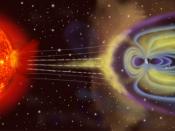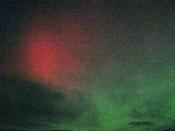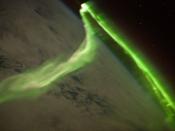The Aurorae
The "Northern Lights" of the aurora borealis are among nature's most beautiful
sights. This light is created by high energy particles that stream from the Sun
and collide with the Earth's atmosphere. The aurorae is not an occasional
occurence in nature, they are a permanent feature of the Earth's upper
atmosphere. Auroral displays vary in intensity, and sometimes they fade away to
almost nothing. But they are always there.
There are aurorae in both hemispheres of the Earth the aurora borealis is
around the North Pole and the aurora australis around the South Pole. The
auroral display stretches high into the atmosphere. In an auroral display,
charged particles from the Sun strike the atoms and molecules of the Earth's
atmosphere, causing them to glow. This stream of particles is called the solar
wind: it radiates continuously from the Sun's corona at over 300 miles per
second.
Aurorae appear in many colors because each gas in the atmosphere glows a
different hue when struck by solar particles.
The color also varies according
to both the electrical state and concentration of the gas. When solar particles
strike oxygen atoms, the atoms glow either green or red. In the lower
atmosphere, there is mostly a green glow because the concentration of oxygen
atoms is high. In the upper atmosphere there are fewer oxygen atoms. The rate
of collision between oxygen atoms is less, to red auroral display predominate.
Particle collisions with nitrogen are responsible for blue and purple displays,
depending on whether the nitrogen atoms are charged (ionized) or not.
Although aurorae are ever-present, they are also ever-changing. Satellites
such as the IMP-8 (Interplanetary Monitoring Platform) have monitored the solar
wind. From their observations we know that aurorae are at their most
spectacular when the solar wind blows fiercely enough...


